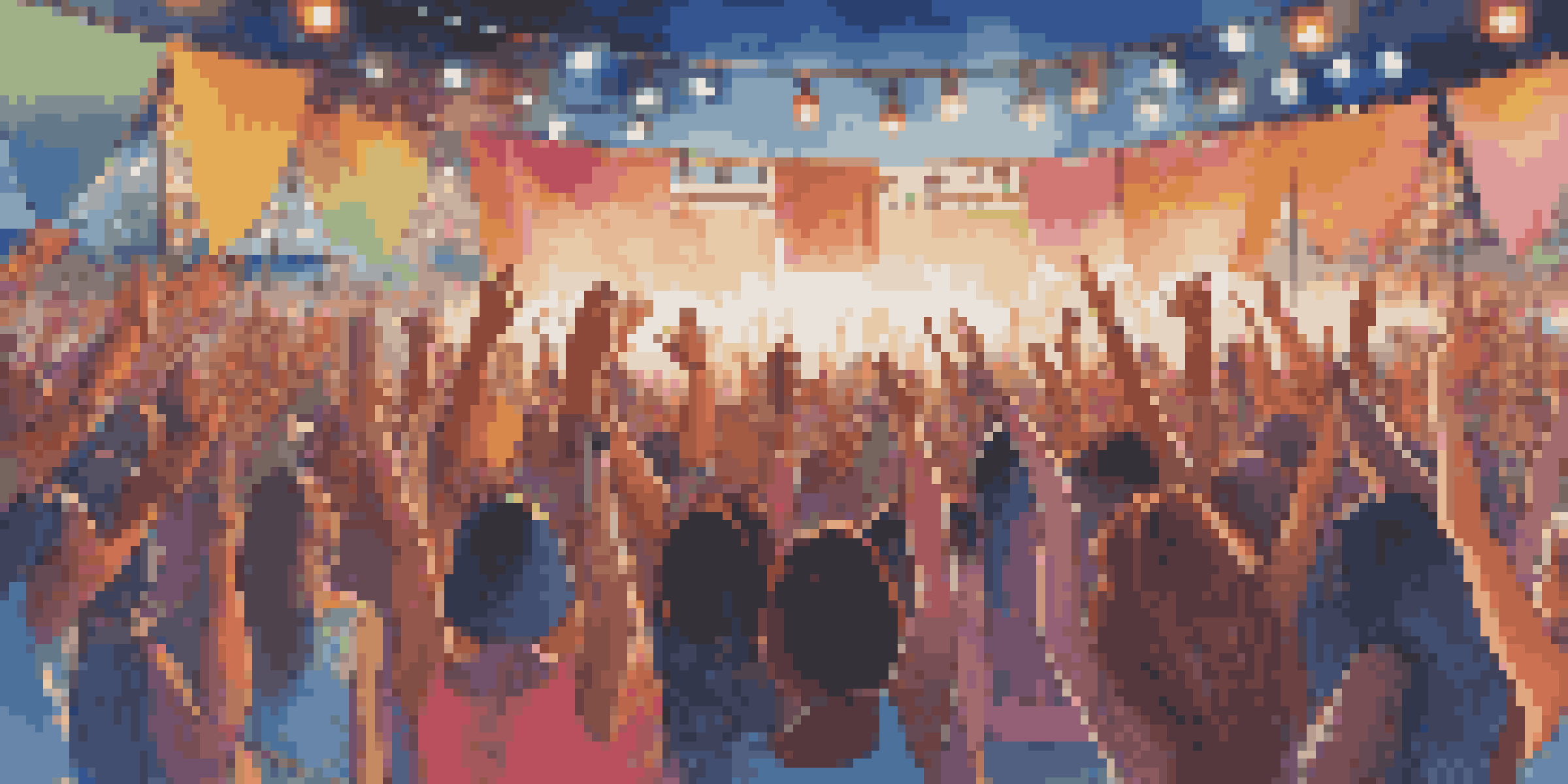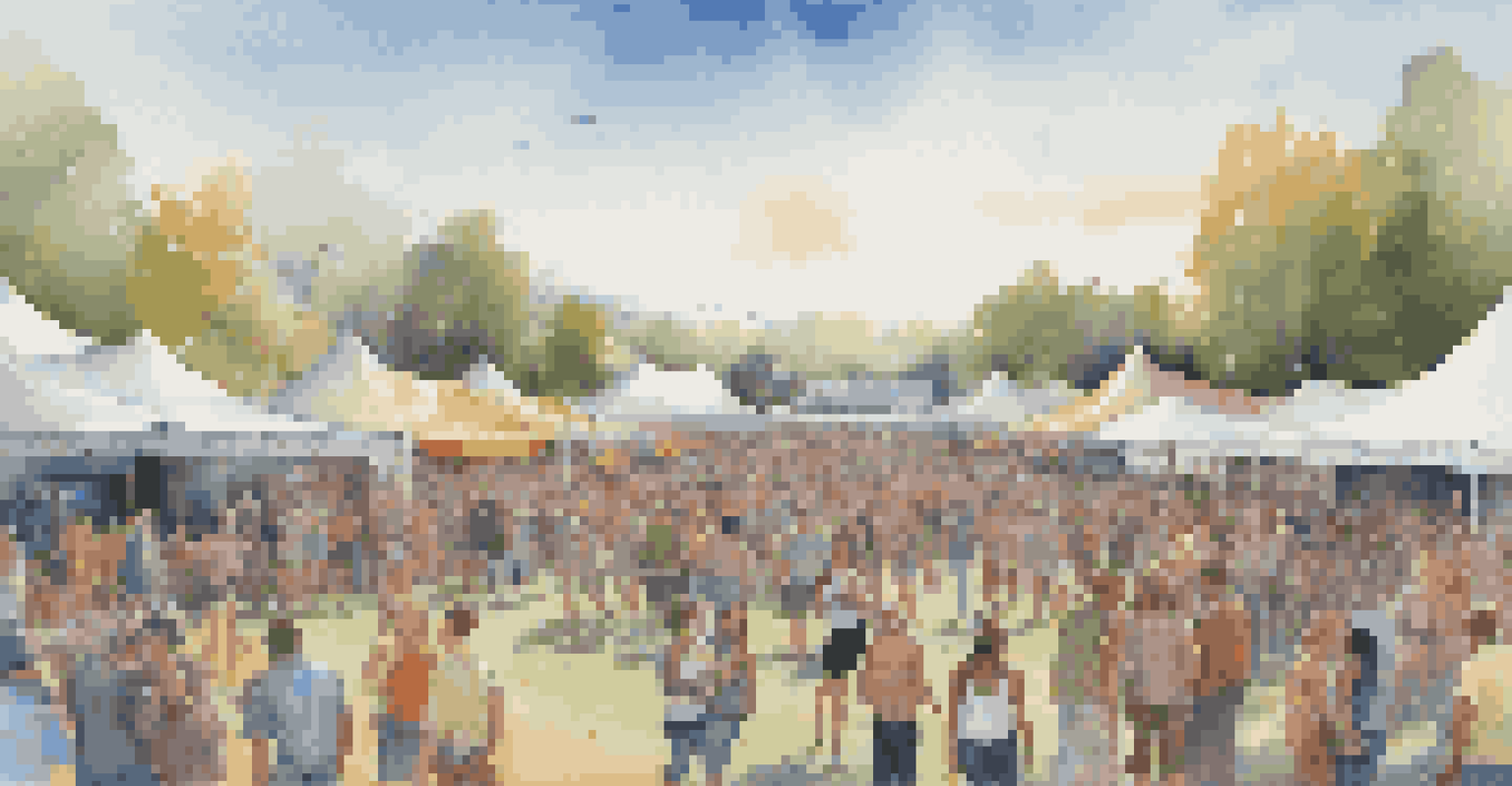The Role of Gender in Music Festivals and Lineups

The History of Gender Representation in Music Festivals
Historically, music festivals have been dominated by male artists, with women often sidelined. This trend has roots in broader societal norms that have marginalized women's voices in the music industry. Festivals like Coachella and Glastonbury, while featuring a few prominent female acts, have frequently been criticized for their lack of gender diversity.
The future of our world is in the hands of our daughters, and we need to ensure they have every opportunity to shine in the music industry.
In recent years, however, there has been a growing awareness and push for more inclusive lineups. The conversation around gender representation has sparked movements advocating for more equitable opportunities for female artists. Events like the all-female Lilith Fair in the 90s showed that dedicated spaces for women could thrive, paving the way for future festivals to rethink their lineups.
This historical context is crucial for understanding the current dynamics at play. As audiences demand more representation, festivals are beginning to recognize that diverse lineups not only reflect societal changes but can also enhance the overall festival experience.
Current Trends in Gender Representation at Festivals
In recent years, many festivals have made a concerted effort to address gender imbalance in their lineups. Events like Glastonbury and Primavera Sound have committed to featuring a higher percentage of women on stage, reflecting a shift in industry standards. This change has encouraged other festivals to follow suit, recognizing the importance of inclusivity.

The presence of female artists is not just about numbers; it's about visibility and representation. When women see themselves reflected in the lineup, it fosters a sense of belonging and encourages more diverse crowds. Festivals that prioritize gender diversity often find that it enhances the overall atmosphere, attracting a wider audience.
Historical Gender Imbalance in Festivals
Music festivals have historically favored male artists, often sidelining women and limiting their representation.
However, there is still a long way to go. While some festivals are making strides, others continue to fall short, highlighting the need for ongoing advocacy and accountability in the industry. The conversation around gender representation is evolving, and it’s crucial for festivals to remain responsive to these dialogues.
Impact of Gender Diversity on Festival Experience
Gender diversity in music festivals significantly enhances the overall experience for attendees. A balanced lineup not only showcases a wider array of musical styles but also creates an inclusive environment where everyone feels welcome. This inclusivity can lead to more engaging performances and a richer festival atmosphere.
Diversity is being invited to the party; inclusion is being asked to dance.
Moreover, diverse lineups can challenge traditional gender roles and stereotypes within the music industry. When audiences see female artists commanding the stage, it can inspire young girls and women to pursue their passions in music. This ripple effect of representation can help reshape societal perceptions of gender roles in the arts.
Ultimately, a festival experience enriched by gender diversity fosters community and connection among attendees. It encourages dialogue around important issues and brings together people from different backgrounds, creating a celebration of shared values and artistic expression.
Challenges Faced by Female Artists in Festivals
Despite progress, female artists still face numerous challenges when it comes to performing at festivals. Issues such as gender bias and unequal pay persist within the industry, often dissuading women from pursuing their musical careers. The pressure to conform to certain stereotypes can also stifle creativity and limit opportunities for female performers.
Additionally, the lack of female representation in festival lineups can perpetuate a cycle of inequality. When women are underrepresented, it becomes difficult for them to gain visibility and recognition, further marginalizing their contributions. This creates an environment where the talent and hard work of female artists can go unnoticed.
Growing Push for Inclusivity
Recent years have seen festivals making concerted efforts to feature more female artists in their lineups.
Addressing these challenges requires a collective effort from festival organizers, industry stakeholders, and audiences alike. Advocating for equal representation and fostering supportive spaces for female artists can help dismantle the barriers that have historically hindered their success.
The Role of Audience and Social Media in Advocacy
The audience plays a crucial role in shaping the discourse around gender representation in music festivals. Fans increasingly demand more diverse lineups, using social media platforms to voice their opinions and hold festivals accountable. This grassroots activism has become an integral part of the conversation, influencing festival programming decisions.
Social media serves as a powerful tool for advocacy, enabling artists and fans to connect over shared values. Campaigns that highlight the need for gender diversity have gained traction, often going viral and generating widespread support. This digital engagement creates a sense of community that can drive real change in the industry.
Ultimately, the combined efforts of audiences and artists can lead to a more equitable landscape for music festivals. By continuing to push for inclusivity and representation, fans can help ensure that the voices of all artists are heard, fostering a richer cultural tapestry in the music world.
Success Stories: Festivals Leading the Charge
Some festivals are setting a remarkable example by prioritizing gender diversity in their lineups. Events like the Boston Calling Music Festival have made headlines for achieving near parity between male and female artists, demonstrating that change is possible. These festivals not only create inclusive environments but also inspire others to follow suit.
Moreover, festivals that celebrate female artists, like the Women’s International Music Network’s events, showcase the talents of women across genres. By providing platforms for emerging female artists, these festivals help cultivate new talent and broaden the scope of the music scene. This focus on female empowerment is crucial for fostering a more balanced industry.
Impact of Diverse Lineups on Culture
Gender diversity in festival lineups enhances the overall experience and fosters a more inclusive atmosphere for attendees.
These success stories highlight the positive impact of intentional programming and community engagement. As more festivals adopt similar practices, we can hope to see a lasting shift in the music festival landscape, ultimately leading to a more equitable industry overall.
Future Considerations for Gender Inclusivity in Festivals
Looking ahead, the future of gender inclusivity in music festivals hinges on continued advocacy and commitment from all stakeholders. Festival organizers must be proactive in creating policies that promote diversity, ensuring that gender representation is not an afterthought. This includes setting specific goals for the number of female artists featured in lineups.
Education and awareness are also key components of fostering inclusivity. Providing resources and training for festival staff and artists can help dismantle biases and create a more supportive environment. By addressing the root causes of inequality, festivals can cultivate a culture that celebrates diversity in all its forms.

Ultimately, the journey toward gender equity in music festivals is ongoing. By remaining vigilant and committed to change, we can look forward to a future where all voices are heard and celebrated, creating a vibrant and inclusive music community.